Garden Blog - Apr '25
Eminent twentieth century etcher, draughtsman, painter, teacher, writer and all-round artistic type, Robin Tanner, perfectly captures the essence of the month in his delightful tempera on mahogany panel piece titled ‘Portrait of April’, where a lady, surrounded by a great abundance of Spring flora, looks wistfully into the distance. Primroses, bluebells, lesser celandines, violets, spotted orchids and wild tulips all jostle for her attention.
Our gardens, too, are bursting with fresh new life just now. Daffodils, tulips and hyacinths are a few of the most prominent flowering bulbs; while primulas, lungworts and violets among others, carpet the ground beneath them. Trees and shrubs, such as flowering currants, magnolias and forsythias, complete the scene.
Without doubt, one of the showiest shrubs of all in our gardens right now, is Chaenomoles x superba ‘Crimson and Gold’. Chaenomoles, known more commonly as flowering quince, are a genus containing four species of medium sized deciduous shrubs in the rose family, that are native to southeast Asia. The name flowering quince refers to them being cultivated primarily for their flowers, though their small golden yellow fruits are suitable for making liqueurs, along with the more traditional marmalades and preserves. The most common flowering quince varieties grown in British gardens are C. x superba, which have been created by crossing Chaenomoles speciosa with Chaenomoles Japonica.
As nature steps up a gear, us gardeners get fully into our stride with the kind of upkeep, such as mowing, edging lawns, and deadheading, that keep our gardens looking smart and trim.
Behind the scenes, where visitors never visit, are our glasshouses, where so many plants are germinated, propagated, and housed. These can be prone to overheating at this time of year. Plants exposed to these conditions have a tendency to dry out quickly and may wilt and scorch as a result. It’s essential, therefore, that we provide the plants within our glasshouses with shade. We use a liquid shading concentrate that is simply mixed with water in a bucket, following manufacturer’s instructions, and applied to the exterior of the glasshouse with a mop. Our glasshouse shading is bought in bulk from a horticultural supplier, but the same product in smaller containers is available in most good garden centres. Alternative methods of glasshouse shading available include external shade netting whereby a large piece of plastic weave can simply be thrown over the roof and clipped to the outside or use the same type of shade netting clipped instead to the interior. Nicely shaded, our glasshouse plants will continue to thrive unstressed throughout the summer.
Finally, us gardeners are delighted to see that the frog and toad spawning season has arrived in the reedy margins of our Top Lake, where great hordes of amorous amphibians are excitedly doing what they can to secure the future of their respective species. Frogs and toads do a great job of munching their way through the slug population, so are of course the gardener’s friend. Our hearts are gladdened to see them spawning again, knowing that before too long their offspring will join them in patrolling the gardens by night.
Until next month, happy gardening.
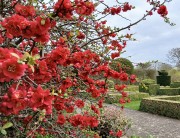 |
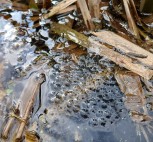 |
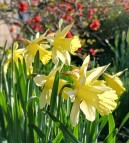 |
 |
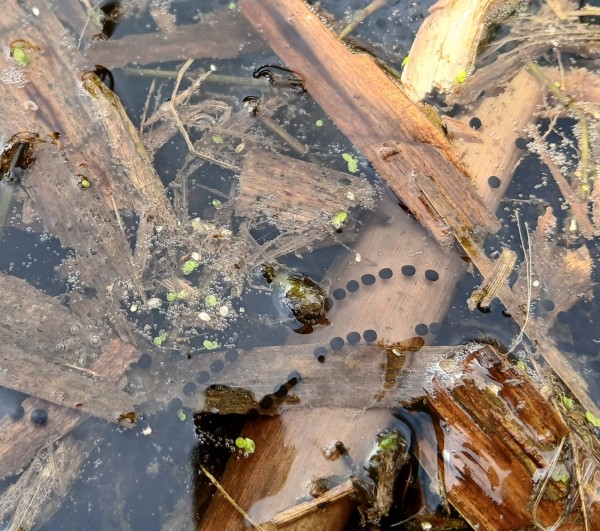 |
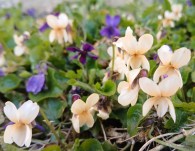 |
| Chaenomoles x superba 'Crimson and Gold' | Gloopy frogspawn | Narcissus 'W. P. Milner' | 'Portrait of April' by Robin Tanner | Strings of toadspawn | Viola odorata var. sulphurea. |

